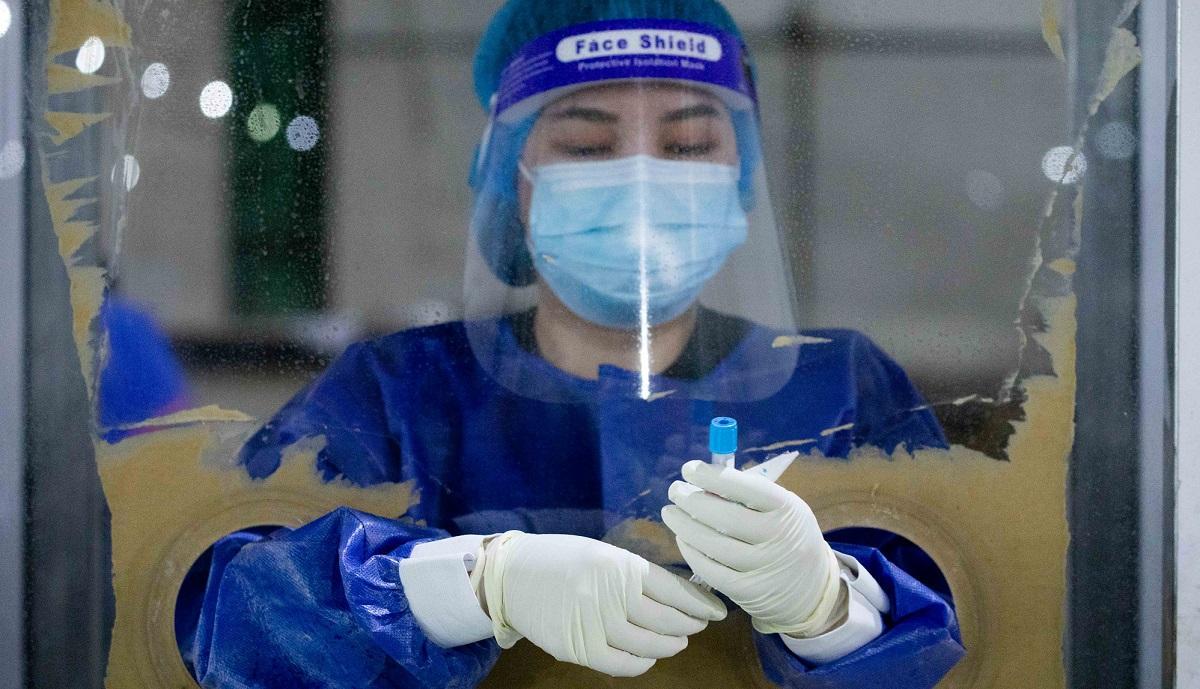DOH admits struggle in interpreting declining COVID-19 cases over drop in lab outputs

The Department of Health has noticed a slow decline in the number of COVID-19 cases in the country in the previous week, but the data could not be interpreted immediately due to the reduced test outputs from laboratories.
“Nakikita natin ang unti-unting pagbaba, nakikita natin in previous weeks, bumagal po ang pagtaas ng kaso and in this past week, nakita naman natin na unti-unting nababwasan o nagdedecline ang numero ng kaso,” Health Undersecretary Maria Rosario Vergeire said during the Laging Handa briefing Saturday.
(We are seeing a slow decline in the number of cases in the previous weeks, and the increase in the number of cases slowed down in this past week.)
“But we would like to emphasize to everybody that we should cautiously interpret our current data dahil alam po natin ngayon mayroon tayong issues sa laboratory outputs,” she added.
(But we would like to emphasize to everybody that we should cautiously interpret our current data because right now we are facing issues on laboratory outputs.)
She mentioned anew that the DOH is looking into the decline in the number of COVID-19 tests conducted by the laboratories.
One of the factors that they are investigating is the use of antigen COVID-19 tests instead of RT-PCR tests.
“We are trying to analyze if the use of antigen test, na hindi pa natin naisasama sa ngayon sa ating mga datos, ay nakakaapekto dito,” the Health official said.
(We are trying to analyze if the use of antigen test, which we have not included in the official data yet, is affecting the test outputs.)
Currently, Vergeire said some hospitals, doctors, and even households are using antigen COVID-19 tests.
She emphasized that the results of these antigen tests should be reported to the local government.
“Based on our recent analysis, with almost 6,000 plus that were submitted to us na resulta ng antigen, when we validate it, only about 300 were according to the purpose that it was used yung tama ang pag-gamit,” she said.
(Based on our recent analysis, with almost 6,000 plus antigen results that were submitted to us, only about 300 were according to the purpose that it was used or the proper use of antigen.)
“So ito lang ang pwedeng isama out of all the antigen tests that were done because people are using these for screening borders, screening for work, screening for certain activities and that is not right or proper use of antigen. Baka magkaroon ng inaccurate results,” she warned.
(These are the antigen tests that we could include in our reports out of all the antigen tests that were done because people are using these for screening borders, screening for work, screening for certain activities and that is not right or proper use of antigen. There might be inaccurate results.)
So far, Vergeire said they have seen a downward trend in COVID-19 cases in Bulacan, Cavite, Laguna, and Rizal but the number of cases in other Luzon areas was still rising.
These areas included:
- Region 1
- Region 2
- Region 4B
- Region 5
- Cordillera Administrative Region
- Some parts of Region 3
- Some parts of Region 4A
On Friday, the DOH reported 18,659 new COVID-19 infections, bringing the total number of cases to 2,453,328.
Currently, the Philippines has 175,324 active cases.
Of this, 88.1% are mild, 6.9% are asymptomatic, 1.5% are severe, and 0.7% are in critical condition. — DVM, GMA News



